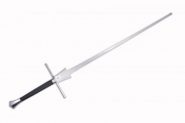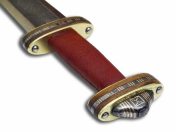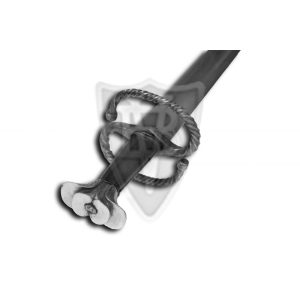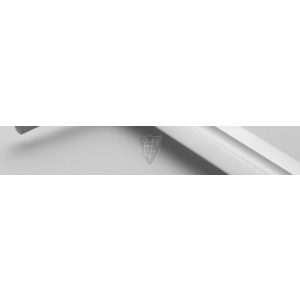Renaissance Swords
Sharpening a sword blade before or after assembling the sword.
During sharpening, the blade loses its original thickness, making it more flexible and lighter, but also more fragile, of course.
The use of sharp swords is a training exercise that requires practice and knowledge, which must be exercised with extreme caution!
Damage and deflection of the swords are primarily due to cutting errors, so these damages are not warranty problems!
Two hand longsword for re-enactment, with a fullered blade, with spikes on the blade. It has a tempered blade and a strong ring guard.
The grip is covered with leather.

Twohand longsword for re-enactment, with a diamond blade. It has a tempered blade, and a strong ringguard.
Grip is covered with leather.



Two-handed longsword, blade without a fuller, spike on the sides.
The handle is covered with leather.
HEMA design, 3 mm edge thickness, with a tempered steel blade.
The blade is flexible, middle stiff, with the tip folded back.



Our Colleagues can help You with exact information about the waiting time!
Katzbalger from the XVI. Century, with a sharp blade.
The blade was made of 51CrV4 steel, heat treated, ideal for test cutting.


Our Colleagues can help You with exact information about the waiting time!
















